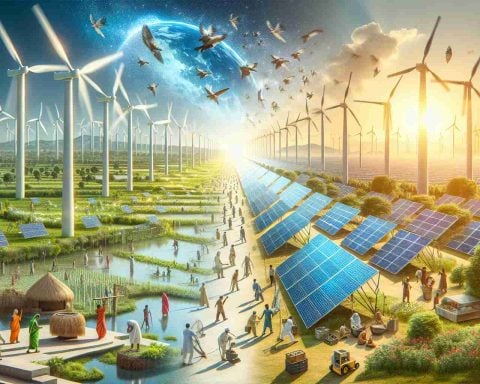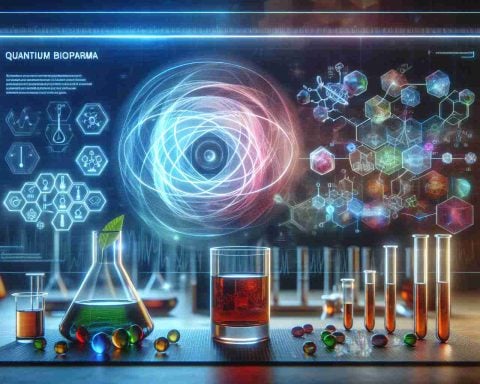- India Energy Week 2025 in New Delhi highlighted India’s leadership in a global clean energy revolution.
- The ‘Clean Cooking Ministerial’ focused on universal access to affordable clean cooking, inspired by India’s Pradhan Mantri Ujjwala Yojana program.
- Key discussions involved affordability, innovative technology like solar cookers, and international cooperation.
- The India-US energy dialogue emphasized hydrocarbon trade, sustainable technologies, and investments in carbon capture and hydrogen.
- Major collaborations included ONGC and Tata Power’s Battery Energy Storage Systems initiative and ONGC NTPC Green’s acquisition of Ayana Renewable Power.
- Ambitious partnerships sought to enhance India’s natural gas market and support its transformation into a gas-based economy.
- India aims to achieve 500 GW from non-fossil sources by 2030, overcoming challenges in indigenous supply chains and land acquisition.
- Oil and gas sectors are aligning growth with decarbonization, focusing on efficiency and innovation to reduce emissions.
Day 2 of India Energy Week 2025 in New Delhi unfolded with India boldly leading a global clean energy revolution. In a dynamic setting at Yashobhoomi, leaders and experts from around the globe delved into pivotal advancements in clean cooking and renewable energy.
India launched the ‘Clean Cooking Ministerial,’ where ministers from Africa and Asia outlined a joint vision for universal access to affordable clean cooking. The Pradhan Mantri Ujjwala Yojana program, providing over 100 million LPG connections, stood as a benchmark, with attendees eager to replicate its success. Discussions emphasized affordability and innovative technology like solar cookers, fostering an international pledge for shared knowledge and resources.
A centerpiece of the gathering, the India-US energy dialogue, reinforced mutual commitments to hydrocarbon trade and fostering sustainable technologies. A spotlight on carbon capture, hydrogen, and next-gen investments underscored their shared ambition to marry economic growth with ecological stewardship.
Collaborations surged forward as ONGC and Tata Power ventured into Battery Energy Storage Systems, aligning with India’s goal of achieving 500 GW from non-fossil sources by 2030. Another landmark deal saw ONGC NTPC Green acquiring Ayana Renewable Power, amplifying their renewable footprint substantially.
India’s gas aspirations were fueled by ambitious partnerships. IGX and HPCL converged to boost liquidity in the natural gas market, while a merger between AG&P Pratham and THINK Gas promised a vast network of pipelines, further cementing India’s shift towards a gas-based economy.
As renewable energy leaders plotted a course to 500 GW by 2030, discussions buzzed around indigenous supply chains, land acquisition hurdles, and the potential of green hydrogen. With a resounding call for innovation and collaboration, India asserted its role as a global solar and wind powerhouse.
Balancing this green surge, oil and gas leaders dissected strategies to blend sector growth with decarbonisation. Efficiency and cutting-edge technology emerged as linchpins in reducing carbon emissions and enhancing production.
India Energy Week 2025 stands as a testament to India’s unwavering commitment to a sustainable and secure energy future.
Unveiling India’s Leading Role in the Global Clean Energy Revolution: Key Insights from Energy Week 2025
India Energy Week 2025 in New Delhi has showcased critical developments in the realm of clean cooking and renewable energy initiatives, positioning India at the forefront of a global clean energy revolution. This event has not only emphasized India’s commitment to sustainable energy but also underscored its leadership role on the international stage.
Clean Cooking Initiatives and International Collaboration
The introduction of the ‘Clean Cooking Ministerial’ highlighted India’s proactive stance on widening access to affordable clean cooking solutions. The monumental Pradhan Mantri Ujjwala Yojana program, which facilitated over 100 million LPG connections, served as an exemplary model for participants from various nations aiming to implement similar frameworks. The discussions at the event underscored the significance of affordability and the use of innovative solar technology to advance these efforts globally.
Key Impact on Global Communities:
Communities, especially in developing regions, stand to benefit significantly through enhanced international cooperation for clean cooking solutions. Reduced reliance on traditional biomass fuels can lead to improved health outcomes and environmental conditions.
India-US Energy Dialogue and Future Technologies
A crucial aspect of Energy Week was the India-US dialogue, focusing on synergies in hydrocarbon trade and the advancement of sustainable technologies. With an emphasis on carbon capture, hydrogen, and cutting-edge investments, the dialogue aimed at harmonizing economic growth with environmental stewardship.
Global Technological Advancements:
These discussions have the potential to pave the way for groundbreaking international partnerships that accelerate the deployment of next-generation sustainable technologies.
Strategic Collaborations and Renewable Energy Goals
Strategic partnerships, such as those between ONGC, Tata Power, and ONGC NTPC Green, are pivotal in India’s pursuit of achieving 500 GW of non-fossil fuel energy by 2030. Key deals to boost battery energy storage and expand renewable footprints are driving momentum in line with this ambitious target.
Impact on Energy Markets:
These collaborations can significantly contribute to more stable and resilient energy systems, potentially lowering costs and increasing accessibility to clean energy, both domestically and internationally.
Aspirations for a Gas-Based Economy
The pursuit of a gas-based economy is marked by collaborations like the one between IGX and HPCL, as well as the merger of AG&P Pratham with THINK Gas. These initiatives aim to bolster liquidity and develop an extensive natural gas network, facilitating India’s transition away from more carbon-intensive energy sources.
Future Prospects:
Natural gas serves as a critical transitional fuel, offering a lower-carbon alternative to coal and oil while the infrastructure and technology align for greater integration of renewables.
Challenges and Path Forward
Amidst these developments, challenges in indigenous supply chains, land acquisition, and the integration of green hydrogen remain pressing topics. Leaders stressed the importance of innovating and collaborating to overcome these barriers, reinforcing India’s stature as a global solar and wind energy leader.
Implications for Policy and Action:
Addressing these challenges through policy and technological innovation will be crucial for ensuring the scalability and longevity of India’s clean energy initiatives, with significant implications for global climate goals.
The Global Ecosystem’s Response
While India asserts its commitment to a sustainable energy future, the global response involves a collective drive for decarbonization in the oil and gas sectors. The convergence of efficiency and advanced technologies is aimed at reducing emissions and amplifying production efficiency across borders.
Industry Evolution:
As these sectors embrace change, they are likely to experience a transformative shift toward sustainable practices, setting precedence for global energy markets.
For more information and updates on global energy policies and practices, readers might visit authoritative industry sources like the [International Energy Agency](https://www.iea.org) or the [World Energy Council](https://www.worldenergy.org).













